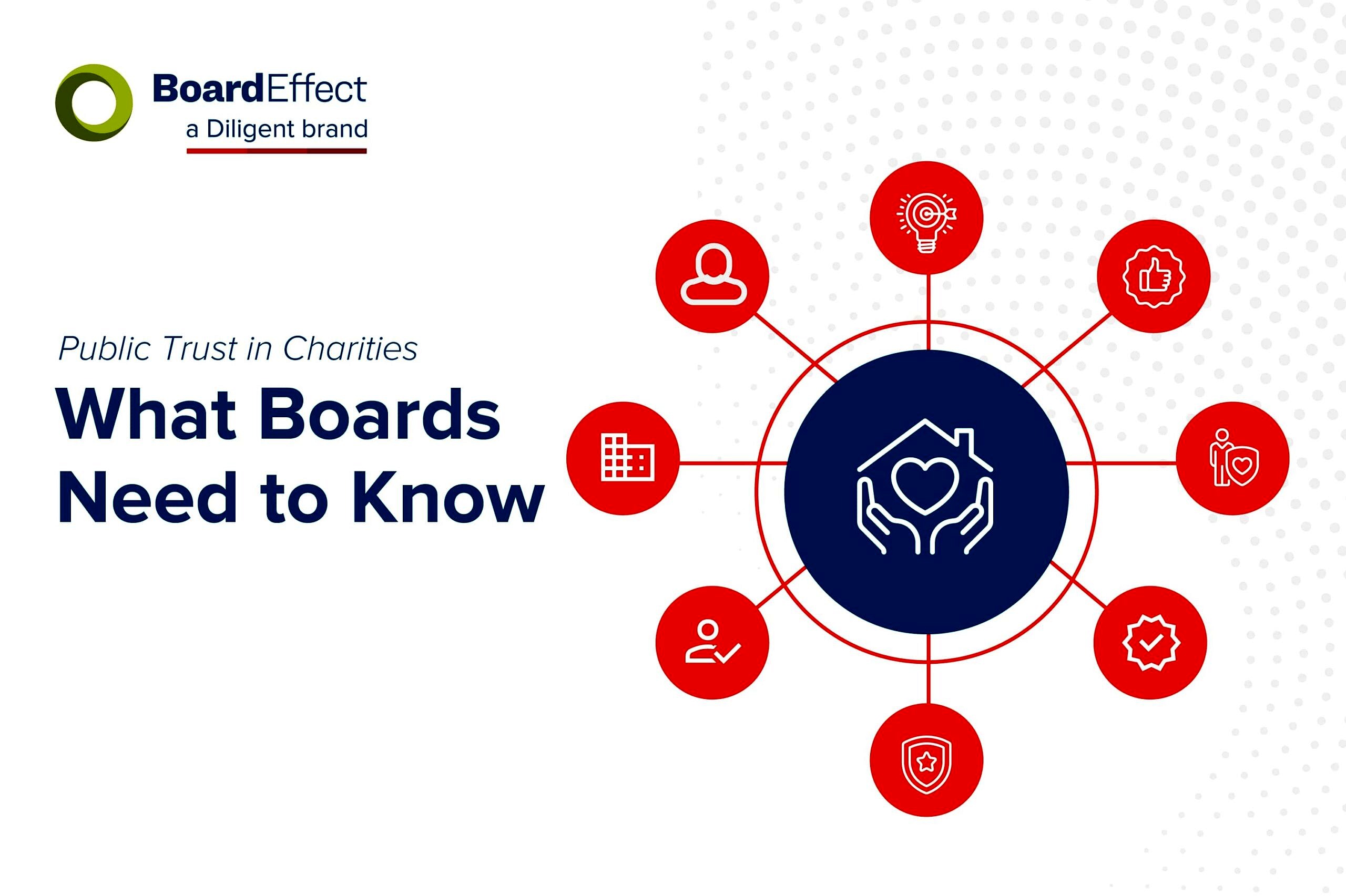
Tech-Enabled Strategies: Empowering Mission-Driven Organisations in Risk Management
The pursuit of a meaningful purpose often goes hand in hand with facing complex risks. As a volunteer board member and steward of your organisation’s mission and resources, you understand the importance of making informed decisions to minimise risks and ensure your organisation’s sustainability and success.
Technology has emerged as a powerful ally for risk management. In this article, we explore how tech-enabled strategies can empower you and your fellow board members, bolster your risk management efforts, and ultimately ensure that your mission continues to build its strengths.
Why Risk Management Matters for Mission-Driven Organisations
Risk management is one of the fundamental principles of governance. Boards of mission-driven organisations bear oversight responsibility as part of their fiduciary duties of care, loyalty and obedience. Board members are also accountable for how they manage risks, whether they’re prepared for them or not.
As your board tackles risk management, you should be having regular discussions about identifying risks, and you should always be asking, “What if…?”
The Challenges of Risk Management for Mission-Driven Organisations
Mission-driven organisations, including charities, nonprofits, NGOs, and social enterprises, operate with the primary goal of advancing a particular cause or mission rather than maximising profit. While they share some risk factors with other organisations, they also face unique risks and challenges:
- Mission Alignment Risk: The core mission of these organisations can be compromised if they become too focused on fundraising or grant requirements. Balancing the financial needs with the mission’s integrity can be challenging.
- Donor Dependency: Mission-driven organisations often rely heavily on donations, grants, and philanthropic support. This reliance can lead to financial instability if donor funding decreases or stops abruptly.
- Reputation Risk: The organisation’s reputation is closely tied to its mission. Any negative publicity, ethical lapses, or mismanagement can significantly harm the organisation’s credibility and its ability to fulfill its mission.
- Program Impact Risk: Ensuring that programs have a measurable impact on the mission can be challenging. Demonstrating effectiveness and accountability to donors and stakeholders is critical.
Key challenges and complexities include:
- Financial Sustainability: Balancing the budget while staying true to the mission is a constant challenge. Many mission-driven organisations face financial instability, as they often operate with limited resources and fluctuating funding streams. The need to balance financial sustainability with social or environmental impact can also engender risk, depending on your funding model.
- Compliance and Regulation: Navigating complex regulatory environments, including tax-exempt status requirements and reporting obligations, can be daunting for nonprofits. Ensuring compliance while allocating resources to the mission is a constant challenge.
- Donor Management: Attracting and retaining donors is essential for mission-driven organisations, but donor behavior can be unpredictable. Finding the right mix of funding sources and building long-term donor relationships is a complex endeavor.
- Resource Constraints: Many mission-driven organisations operate with limited staff, technology and infrastructure. This makes it challenging to implement robust risk management practices, such as cybersecurity measures or internal controls.
- Volunteer Management: Reliance on volunteers is common, but managing a diverse volunteer base can be complex. Ensuring they align with the organisation’s mission and values while providing the necessary training and supervision is crucial.
- Diversity of Stakeholders: Mission-driven organisations often serve diverse communities and stakeholders with varying needs and expectations. Balancing these interests and maintaining inclusivity can be challenging.
- External Factors: Economic downturns, changes in government policies and shifts in public opinion can significantly impact mission-driven organisations. They must adapt to external factors while staying true to their mission.
- Program Evaluation: Measuring the impact of programs and demonstrating effectiveness to stakeholders and donors can be complex, especially for organisations focused on long-term and multifaceted social or environmental goals.
Effective risk management requires a deep understanding of your mission, clear strategic planning, financial stewardship, and a commitment to transparency and accountability.
Board Technology as a Risk Management Tool
Here are some of the ways that board technology can help nonprofits and charities address and manage risks effectively.
Streamlined Communication and Decision-Making
Board technology facilitates efficient communication among board members, staff and stakeholders, enabling faster responses to emerging risks. Virtual board meetings and communication tools ensure that key decisions can be made promptly, reducing the lag time in addressing critical issues.
Enhanced Collaboration
Effective risk management relies on clear and efficient communication among staff, volunteers, and board members. Board management software enables collaborative workspaces where board members can securely access and share documents, reports and key data. This fosters collaboration on risk assessment, mitigation strategies and compliance efforts, leading to more informed and coordinated risk management, as well as timely decision-making.
Data Analytics
Many board management platforms provide real-time reporting and analytics features. Your organisation can track key performance indicators (KPIs) related to your mission, finances and operations. This enables proactive risk monitoring and early intervention in case of deviations from established benchmarks.
Secure Data Handling
Charities and not-for-profits often deal with sensitive donor information, financial records and strategic plans. Board technology offers secure data storage and sharing mechanisms, with role-based access controls, encryption and audit trails, ensuring that confidential information remains protected from unauthorised access and data breaches.
Document Retention and Compliance
Board technology assists organisations in maintaining compliance with regulatory requirements. It enables the organisation to retain and manage critical documents, such as meeting minutes, financial statements and bylaws, ensuring that they are easily accessible for audits or regulatory inquiries.
Risk Assessment and Scenario Planning
Charities and not-for-profits can use board technology to conduct risk assessments and scenario planning exercises. By simulating various risk scenarios and their potential impact, organisations can develop robust risk mitigation strategies and contingency plans.
Board Training and Education
Board technology often includes training and educational resources. This helps board members stay informed about evolving risks, compliance obligations and best practices in nonprofit governance, empowering them to make well-informed decisions.
Managing Committees
Charities and mission-driven organisations frequently engage in various projects, such as fundraising campaigns, grant applications and community outreach initiatives. Your board software can help manage committees and streamline project planning, execution and monitoring, reducing the risk of delays, oversights and resource misallocation.
Transparency and Accountability
Nonprofits can use board technology to demonstrate transparency and accountability in their risk management efforts. By documenting risk assessments, mitigation plans and progress reports, organisations can build trust with donors, beneficiaries and stakeholders.
Crisis Response
In times of crisis or emergencies, board technology enables swift and coordinated responses. Board members can communicate and make decisions remotely, ensuring the organisation’s ability to adapt and mitigate risks even in challenging circumstances. Boardroom technology also aids the board when developing disaster preparedness plans and implementing data backup and recovery strategies. This ensures that critical data and operations can be quickly restored in the event of unforeseen disasters or disruptions.
Compliance and Regulatory Tracking
Many nonprofits are subject to complex regulatory requirements. Compliance tracking and reporting can be coordinated using your board software, helping trustees to stay up to date with changing laws and regulations. This reduces the risk of inadvertent non-compliance and associated penalties.
Cybersecurity and Data Protection
The technology you use has a huge role in protecting sensitive mission-related data against cyberattacks. Nonprofits often handle sensitive donor information and financial data. Technology provides cybersecurity solutions that protect against data breaches and cyberattacks. Firewalls, encryption and threat detection systems help safeguard valuable information, ensuring donor trust and compliance with data privacy regulations.
Combining Risk Management Planning with Board Technology
To combat and mitigate risks, boards can take a five-step approach to enterprise risk management that includes:
- Identifying risks
- Analysing risks
- Evaluating risks
- Implementing a risk management program
- Monitoring efforts.
Board technology is a valuable tool that empowers mission-driven organisations to enhance risk management practices. It promotes collaboration, secure data handling, compliance and informed decision-making, ultimately helping organisations protect their mission, reputation, and long-term sustainability while navigating a complex and dynamic landscape of risks.
Board management software such as BoardEffect offers the highest level of security available so boards and risk management teams can carry out risk management using a secure platform and secure communications. Board administrators can set up granular permissions to control who has access to various parts of the risk management process.
Your risk management plan and BoardEffect can combine to support good corporate governance principles and to enhance the sustainability of your mission-driven organisation.







